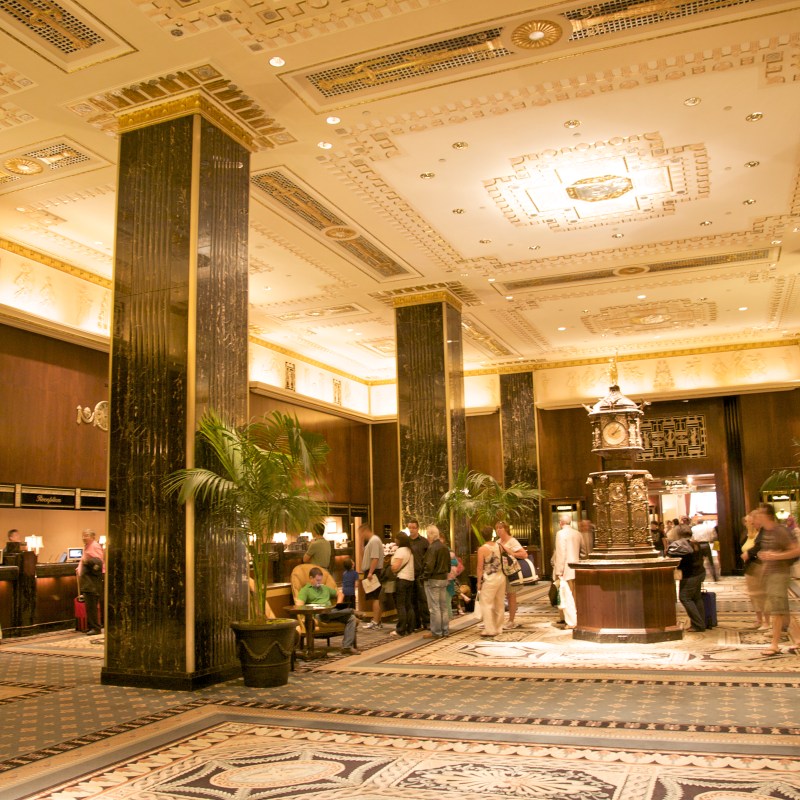
Hilton’s most famous property might just be NYC’s Waldorf Astoria. Of all New York City’s most iconic hotels, it stands apart—amongst the likes of the St. Regis, The Plaza, and The Hotel Chelsea.
Videos by TravelAwaits
Originally built back in 1931, it remained the largest hotel in the world until 1957. Its towering, commanding Art Deco design rises 47 floors into Midtown’s skyline. Its primary penthouse room was designed to emulate the White House and has played host to famous celebrities, from Frank Sinatra to the Duke and Duchess of Windsor to Albert Einstein.
I can’t emphasize this enough: The Waldorf Astoria has played host to some insanely elite parties, meetings, and gatherings during its nearly 100-year run. I’m talking four of the actual Dead Sea Scrolls (you know, religious texts written in the 3rd century BCE) were sold privately in their basement.
For decades, the property was run by Hilton. The hospitality group began privately managing the property in 1949 before buying it outright in 1972.
Then came another buyer in 2016: Anbang Insurance Group, a Chinese insurance company. They purchased the property for almost $2 billion… before the property switched hands again to Daija Insurance Group Co after Anbang went bankrupt.
Since then, another $2 billion has been poured back into the property via renovations, restorations, and tons of new builds. And it’s finally reopening to the public.
Welcome to the new Waldorf Astoria.
Updates, refurbishments, and history at the Waldorf Astoria
Anbang’s buyout signaled a new beginning for the Waldorf Astoria. The property now includes a separate area for its residential condominiums, known as The Tower.
Otherwise, Hilton remains in charge of running and managing the hotel rooms—and much of the interior remains the same. They signed a 100-year contract at the time of the buyout to ensure the historic hotel wouldn’t be drastically altered.
That being said, the Waldorf isn’t necessarily at risk of disappearing.
Areas like the Grand Ballroom and Peacock Alley were declared New York City Landmarks by the NYC Landmarks Preservation Committee. Additionally, the hotel was listed as a Historic Hotel of America, further protecting its status and design.
In other words, expect plenty of sleek, modern refurbishments since the Anbang buyout and Daija takeover, but don’t expect major switch-ups to the atmosphere and essence.
For example, the new reception area will use the same marble that was used in the famous Peacock Alley, creating a sense of what Hilton calls ‘visual continuity’. At least, when it comes to those more iconic communal spaces.
So, what’s actually changing?
As mentioned up top, the primary change to the Waldorf Astoria is the addition of its new residential condominiums. While Hilton is still managing the property and the hotel section, the condominiums have been the main source of construction delays since the 2016 buyout.
Previously, the Waldorf Astoria had 1,400 rooms. But they’ve now been divided into 375 guestrooms and 372 private residences. In terms of hotel rooms, guests can expect much larger and apartment-like spaces that include bars and spa-level bathrooms.
